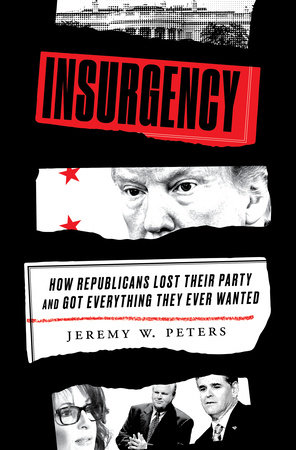At Foreign Affairs, "Is Russia’s Economy on the Brink?":
In April, just weeks after he launched the invasion of Ukraine, Russian President Vladimir Putin maintained that the West could never strangle Russia’s economy. The barrage of American and European sanctions had not succeeded and would not succeed in bringing his country to its knees. “We can already confidently say that this policy toward Russia has failed,” he told his officials. “The strategy of an economic blitzkrieg has failed.” Such defiant posturing can be expected of Putin and other Russian leaders. But now, six months after the beginning of the war and the imposition of sanctions, many observers are questioning whether Western sanctions have had the tough effects their architects promised. International observers such as the International Monetary Fund have revised their projections of Russian GDP upward from earlier this year. Compared with initial forecasts made right after the imposition of sanctions, Russia’s economy has done better than expected, partly because of deft technocratic Russian policymaking and partly because of tight global energy markets, which have kept the price of oil and gas high. Russia’s economic overperformance must be placed in context, however. Few observers and policymakers expected sanctions to cause enough pain to force Russia out of the conflict in a matter of months, so Russia’s ongoing war shouldn’t be a surprise. Yet Russia’s economy is still hurting; it is suffering a steeper growth slowdown than was seen during the 2008 financial crisis and one that is unlikely to be followed by a postcrisis rebound. Living standards are being supported by social spending that will be difficult to sustain and that will likely force tough decisions about the government budget over the coming year. Thus far, Putin has promised Russians that he’s fighting a “special military operation,” not a war that could impose tough sacrifices on the population. As time passes, however, the cost of the war and the effects of sanctions on ordinary Russians will only grow. BELTS TIGHTEN IN RUSSIA For a health check on the Russian economy, start with some macroeconomic data. Russia’s GDP has shrunk by around five percent compared with last year, with the rate of decline increasing each month since the war began. Industrial production, which includes Russia’s oil and gas industries, has fallen by only about two percent compared with last year (a reflection of high energy prices), although the manufacturing segment of Russian industry has fallen by 4.5 percent. Inflation stands at just over 15 percent, down somewhat from the nearly 18 percent peak after the ruble slumped, then recovered, in March. Adjusted for inflation, monthly wages are down by about six percent compared with last year. (Some analysts have expressed skepticism about Russia’s official data, yet there is no evidence that the state statistics agency is engaged in large-scale manipulation.) Russia’s inflation statistics may not fully capture the reality that buying certain products is now occasionally difficult (in the case of iPhones) or nearly impossible (in the case of Lexus automobiles). Similarly, inflation data struggle to quantify the impact of reduced quality. Russia’s government, for example, is changing regulations to allow the sale of vehicles without airbags or antilock brakes, which are now difficult to produce because of sanctions-induced supply chain problems. This degradation in quality won’t show up in inflation data, but it will eventually be felt by Russians, especially the urban, wealthier Russians who consume more of the imported goods that are now harder to access. Even accounting for the inflation captured by government statistics, wages are trending sharply downward, around six percent lower compared with last year. Social welfare payments such as pensions, which are the primary income source for older Russians, have been eroded by inflation since the war began. The government increased pension payouts by over eight percent in June to compensate, but without more such expensive social spending increases in the coming months, the typical Russian’s income will decline in the second half of the year. The fact that retail sales are down by nearly ten percent suggests that consumers have already started saving in anticipation of tighter budgets to come. THE OIL KEEPS FLOWING Although households are only just beginning to feel the impact of lower living standards, some industries have already been hit hard. Rather than looking at aggregate industrial production data, which include both raw materials and manufacturing firms, it is more insightful to analyze each sector separately. The raw materials sector has been only slightly affected, which is no surprise given that prices are high and that Western sanctions have been designed to keep most commodities, thus far including oil, flowing freely. The Russian economy owes much of its resilience to its trade in natural resources. With quiet diplomatic support from the United States, the United Kingdom and the EU have been watering down sanctions that were supposed to take effect against Russian oil exports later this year. To keep energy prices from spiking, the West has backed away from some efforts to stop Russia from redirecting oil exports to other customers, such as China and India. Now, under recent tweaks to sanctions, European firms will be allowed to ship Russian oil to third parties. Because the West has implemented few significant sanctions on Russia’s oil and gas exports, and because the EU’s oil import ban doesn’t take effect until December, the volume of Russian oil exports is basically unchanged since sanctions were imposed. Sanctions are now forcing Russia to sell oil at around a $20 per barrel discount to global benchmark prices. Still, the latest monthly data that Russia’s government released on its revenue from taxing oil suggest the country is making roughly as much in export revenue as it did in January. By contrast, revenues from the export of natural gas—far less important to Russia than oil exports—have slumped after the Kremlin restricted its sale to Europe. INDUSTRIAL WOES Unlike Russia’s energy industry, the rest of Russia’s industrial sector has been hit hard. Among the worst affected sectors have been cars, trucks, locomotives, and fiber optic cables, each of which has seen production fall by over half. In other sectors less exposed to foreign ownership or complex supply chains, such as textiles or food processing, production is flat or in some cases has increased relative to last year. One cause of this industrial disruption is the withdrawal of Japanese, U.S., and European firms that had factories in Russia. Some of these factories will reopen under new Russian ownership, but operating them independently may prove difficult. Manufacturers are also struggling to source necessary materials. Accessing components from abroad is now far trickier, because even products not under formal restrictions are harder to access, ship, and pay for. “I cannot say we’re facing a total blockade,” the CEO of Transmashholding, a Moscow-based railroad equipment firm, told Russian media, referring to the difficulties his firm has in shipping and paying for imported components. “But we face increased friction.” A key question over the coming months is whether these industrial disruptions intensify or are resolved. On the one hand, Russia has now had nearly half a year to establish alternative payments and logistics networks, which should allow some crucial nonsanctioned imports to reach the country. On the other hand, Russian firms when surveyed say they are continuing to draw from existing inventories, implying that they are still struggling to source necessary components. Monthly data show that Russian imports of industrial goods and components remain far below prewar levels...
Still more.















